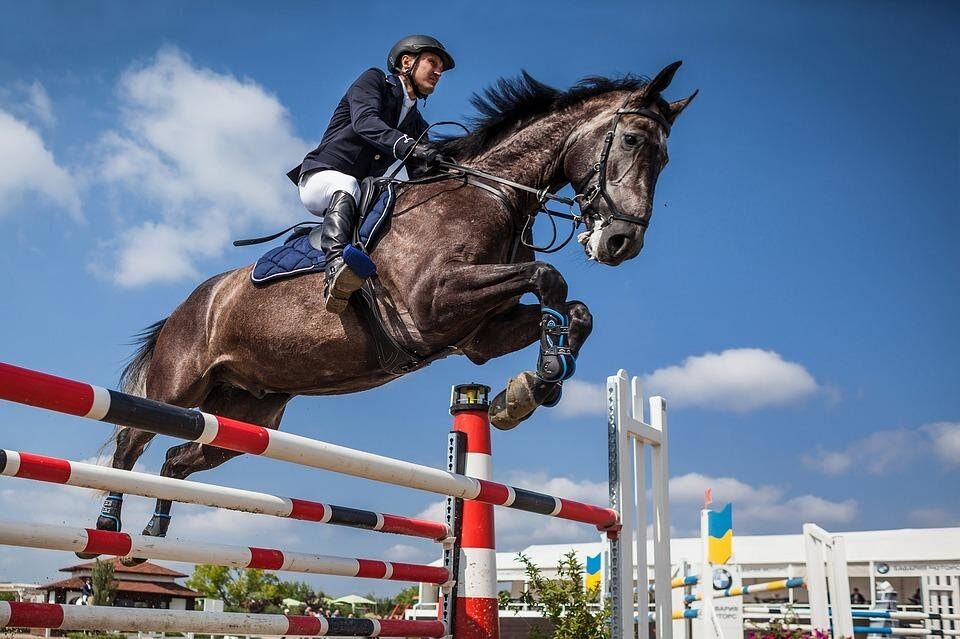
The sport of horse jumping is prominent throughout the world, including the Olympics. Every year hundreds of horses and riders take part in these equestrian competitions and they have become popular sources of entertainment.
In addition to being a popular sport, horse jumping has sparked much speculation. Although some claim that horse jumping is totally safe, others say that you can potentially injure your horses and riders.
In this article, we will guide you through all the important pointers that will help you better understand what show jumping is. What are the critical risk factors included and how can you train your horse for show jumping events?
What is show jumping ?
Instead of jumping to conclusions, let's first take a closer look at what exactly show jumping is.
Show jumping is a sport in which horses and riders compete over the hurdle course at a predetermined pace to test their jumping skills.
Both horses and riders benefit from jumping due to their agility and concentration. Physical skills are needed to maneuver through a series of obstacles while mental skills are employed to plan the best lines and approaches for the horse to navigate.
What breed of horse is used for show jumping?
Horses have a natural tendency to jump. However, that doesn't mean everyone can jump well. Let's examine which breed of horse can jump well.
Some famous breeds of jumping horses are: Holsteiner, Hanoverian, Arabian, Trakehner, Oldenburg, Quarter Horse, Dutch Warmblood, Irish Sport Horse, Thoroughbred and Belgian Warmblood.
The legs and muscles of these horses are powerful, allowing them to jump over obstacles with ease and efficiency. Typically, these horses are bold, athletic, and warm-blooded, and as a result, they are good at jumping rings.
Are jumps cruel to horses?
Although jumping has become a popular sport, do horses really enjoy jumping? Or are they forced to? Read on to find out if show jumping is really cruel to horses or not.
Participating in show jumping is not always cruel to horses. It becomes cruel when the animal is forced to race too often, when it is not given adequate time to recover, or when riders use heavy equipment and pain-relieving drugs to train them.
Since horses have the instinct to run and jump, they generally enjoy doing so. Therefore, most of the time they love to participate in jumping events. However, it becomes cruel if they are forced to jump.
What is the best jumping horse in the world?
Having discovered that there are a variety of breeds used in show jumping, let us examine which is the best show jumping horse in the world.
Snowman is considered to be the best jumping horse in the world. With his longest jumps of 7 feet 2 inches, Snowman has won numerous championships and was named USEF Equestrian Horse of the Year in 1958.
After the snowman, the snowbound, the stroller, the Big Ben, the Gem Twist and the Huaso are the best jumping horses of all times. Internationally, they have been praised for their outstanding achievements.
How much does a good jumping horse cost?
Show jumping is one of the most famous equestrian events at the Olympics, followed by dressage and eventing. This factor likely drives the demand for and cost of jumping horses. Let's see how much they really cost
Your experience level determines the cost of jumping horses. The price of professional horses starts at USD 10,000 and goes up to USD 100,000.
The cost of a horse will depend on several factors such as age, breed, and level of training. For example, trained young show jumping horses may cost more than older horses.
A professional jumper earns around $20 to $40 per year; this is probably the other reason why they are so expensive.
What makes a good jumping horse ?
To be successful in jumping, horses must have the physical performance to jump multiple obstacles without knocking over the rails. Let's examine what qualities a good jumping horse possesses.
Horses with agility, courage, and good form make good jumping horses. In addition to weight and height, health conditions are also critical to jumping success.
Jumping sports require both horses and riders to be athletic and precise. This is why a horse needs to be well balanced, flexible, brave and fearless.
At what age should a horse stop jumping?
A horse's instinct to jump is inherent, but at what age they should stop jumping is still unknown. Let's analyze from what age they can continue jumping.
There is no predefined age at which a horse should stop jumping. It all depends on the general health of the horse. Until and unless it is in good health, a horse can continue to jump.
Horses can start jumping from a young age and can be fully trained until they reach the age of maturity, i.e. seven years. After that, they will be able to jump more efficiently and may even participate in jumping events until they are in their 20s and 30s, but only if they are healthy and physically fit.
Why does my horse jump too much?
Most horse owners ask this question; Why does my horse jump too much? So, there is not one reason, but several.
Horses can over-jump for a variety of reasons, including anxiety, pain, anger, excitement, restlessness, sore feet, or not jumping enough in recent weeks.
In addition to these reasons, some horse breeds jump too much because of their shyness, while others jump too much because of their passion for jumping.
What does the rider do in the horse jump?
During show jumping, the horses are guided by their riders. Let's see what riders should do during jumping events.
The rider needs to loosen the reins at the start, allowing the horse to lift its head and jump freely. The rider must put the horse in range, maintain rhythm and balance during jumps.
The rider guides the horses and controls them for all small and large obstacles. Thus, the role of the rider in horse jumping is no less important than that of the horse. The cyclist must be determined, brave, vigilant and confident.
How can I improve my show jumping position? ?

To be successful in the ring and progress to bigger jumps, you must have good jumping technique.
Having the proper stirrup length, keeping your lower leg secure, following your horse's movement, having the saddle positioned correctly, and maintaining straightness, balance, and drive are all vital to a good jumping position.
What are the phases of the jump?
Horse jumping is not as easy as it seems. It consists of several phases, which we will discuss below.
There are five phases of horse jumping. The first phase is the Approach, followed by takeoff, flight, landing, and recovery. All these phases are essential for a good jump.
Before the jumping horse normally analyzes the jump and the efforts to be made, the horse brings its hind legs forward and leaves the ground during the flight phase. After landing, the horse usually takes a few minutes of recovery time before another jump.
How high can a horse jump?
Horses must be able to jump high to participate in jumping events. But how high do they need to jump? Or how high can they really jump?
The best jumping horses can jump up to 6 feet high. However, jump courses are typically 3 to 4 feet high; therefore, a trained horse can easily jump that high.
A horse's height, weight, age, and health determine how high it can jump. In addition to that, factors like the purpose of the jump, the rider, the training, and the goal also influence your jumping ability.
Why do jumping horses wear earmuffs?
Jumping horses are often seen wearing earmuffs. Let's take a closer look at what they are, why they wear hats, and their purpose.
A jumping horse wears earmuffs that look like a hat. They are important for horses during competitions. In addition to keeping horses' ears free of flies, ear covers also keep horses calm by muffling sound.
During show jumping rounds, it is normal for horses to become distracted or anxious by loud crowd noises and other announcements. Therefore, ear covers help reduce sound.
